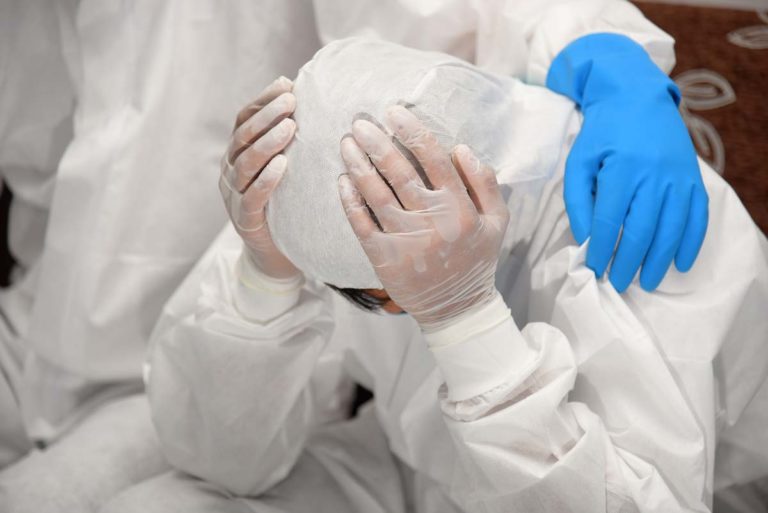After reading A Pandemic’s Toll on Nurses, my heart is heavy. But, I am also hopeful because we have a voice, and we are having these conversations.
At the beginning of the pandemic, we scoured the CDC and health department websites. We engrossed ourselves in social media posts from nurses in hot spots like New York and New Orleans.
We were hoping for any insight to help our front-line nurses care for COVID-19 patients and protect themselves. Frustration often set in because the science seemed to change hourly.
Now, we better understand how COVID-19 attacks the systems in the body. Our employee health nurses know more about exposure, testing, symptoms, and quarantine.
We recognize complications more quickly. We know more about caring for a patient in the prone position and that COVID-19 patients may need increased sedation while intubated.
We recognize the lingering effects of this disease and are concerned about what we will learn over the next year.
There are Concerns About Burnout and Mental Health
Nurses often work long hours and in high-pressure situations. We see the spectrum of humanity and some of those aspects can be daunting. We juggle work, family, commutes, and responsibilities at home.
We were trained to put on our nurse “hat” and leave our worries at the door. But we are human, and that is often easier said than done.
Instead, many of us tuck our emotions aside and just move forward.
Nurses were already at high risk for depression, burnout, compassion fatigue, and traumatic stress disorders. The events of the last year have magnified these issues.
I see a look in the eyes of my colleagues that I’ve not seen before. It tells me they are tired and that they have seen unimaginable things. They are still concerned about inadequate PPE, taking the disease home, and staffing shortages.
The perseverance I see in my fellow nurses is mind-blowing. But how do we recognize our breaking point and what should we do about it?
One in Five Nurses Foresee New Paths After 2021
My friend once told me she was hesitant to retire because her identity was interwoven with being a nurse.
But you know what she realized? That she will always be a nurse, no matter her path. It is ingrained in her.
All the long hours we’ve spent researching and studying to teach our patients or future nurses. The moments we’ve given courage through our smile and the warmth in our voice. Or, the times we let patients borrow our strength when they felt they couldn’t push forward.
These are the things that make us a nurse.
I hope that if my fellow nurses need a new path that they do so with confidence. If change is what they need, that they reinvent themselves in a new area of nursing. The ability to change specialties is a great benefit of the nursing profession.
To my friends who work behind the scenes with me, know that all nursing roles are needed and valued. Many of you have expressed guilt for not being on the front lines; please remember the difference you have made and continue to make in thousands of lives.
To my friends on the front lines, my words are inadequate. Please know that we see you and we appreciate you.
I hope that our profession continues to look for ways to care for you, ourselves, and each other.
References
American College of Clinical Pharmacy. (October 2020) Analgesia and Sedation Strategies in Mechanically Ventilated Adults with COVID‐19. Retrieved from:
https://accpjournals.onlinelibrary.wiley.com/doi/full/10.1002/phar.2471
Nursegrid. (2021). A Pandemic’s Toll on Nurses. Retrieved from: https://nursegrid.com/wp-content/uploads/2021/01/Nursegrid-Pulse-Survey-January-2021.pdf
Hackensack Meridian Health. (2020). What Is Proning and How May it Help COVID-19 Patients? Retrieved From: https://www.hackensackmeridianhealth.org/HealthU/2020/05/06/what-is-proning-and-how-may-it-help-covid-19-patients/
Mayo Clinic. (2020). Long Term Effects of COVID-19. Retrieved from: https://www.mayoclinic.org/diseases-conditions/coronavirus/in-depth/coronavirus-long-term-effects/art-20490351
